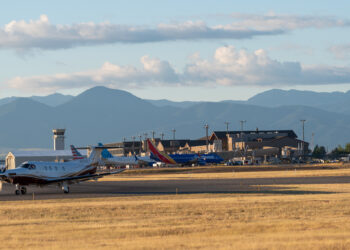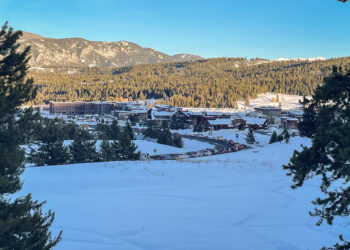EBS STAFF
BIG SKY – Wildfire smoke drifted into Big Sky and the Gallatin Valley overnight Sunday, bringing the Air Quality Index up to moderate in Big Sky and unhealthy for sensitive groups in Bozeman.

AQI is the U.S. Environmental Protection Agency’s measure of air pollution. It runs on a scale from 0 to 500. Big Sky’s rating Monday morning of 80 poses a risk for people unusually sensitive to air pollution, according to AirNow.gov, a partnership between the EPA, the National Oceanic and Atmospheric Administration and NASA, among other government agencies. Bozeman’s AQI as of Monday morning was 124.
The wildfire smoke is primarily from the Moose Fire near Salmon, Idaho, and the Double Creek Fire in northeastern Oregon.

The Moose Fire currently spans nearly 126,000 acres and gave off enough smoke and haze Sunday that helicopters were grounded due to unsafe flying conditions, according to InciWeb, a government clearinghouse for wildfire information. A change in weather is expected to begin this afternoon, with more clouds, humidity and the possibility of rain.
The Double Creek Fire has burned more than 155,000 acres, according to InciWeb. The fire was caused by a lightning strike and was first detected on Aug. 30.













